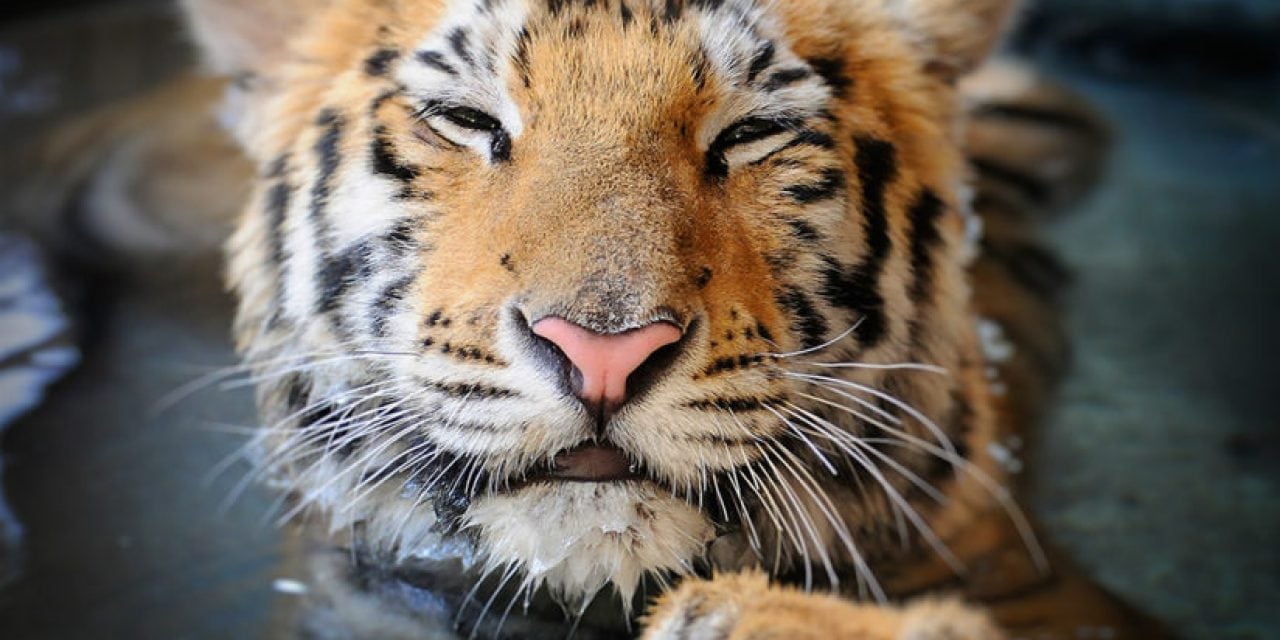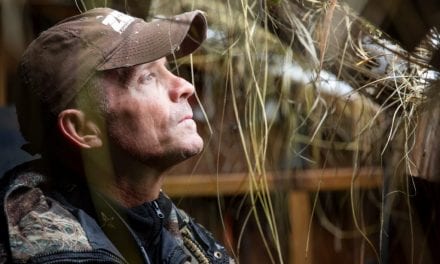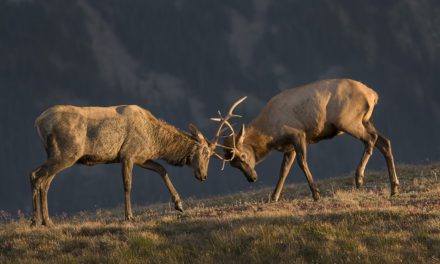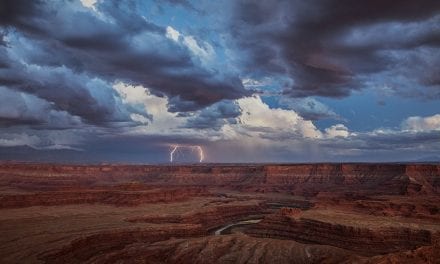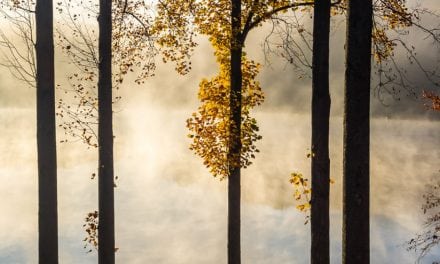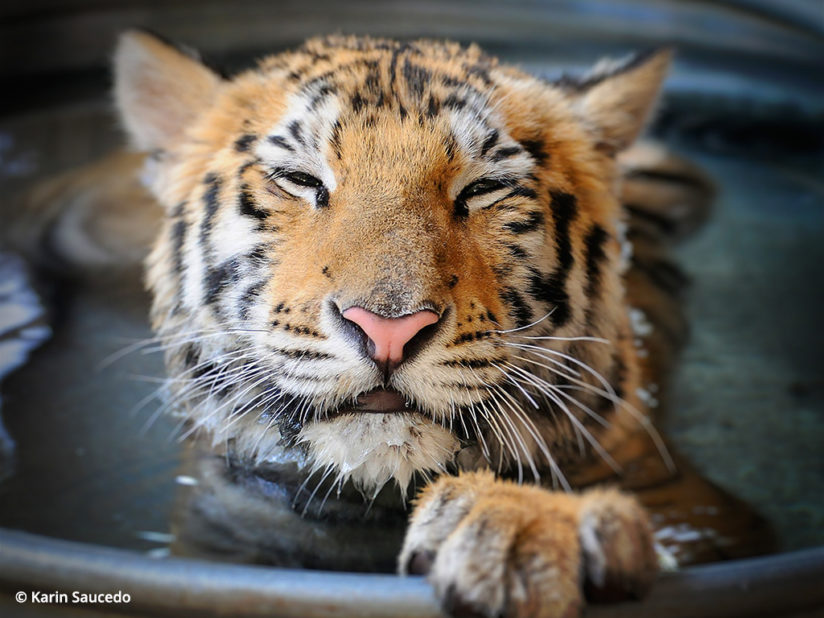
I knew the day I met Aasha that we’d be lifelong friends. She looked at me with her piercing aqua eyes, and we made an instant connection. Aasha was a 5-month-old tiger, yet she had the most intimidating vocalizations for such a tiny little girl. She was feisty but she was also sweet. She chuffed at me several times as she rubbed against the fence with affection.
Aasha was confiscated by the USDA from a tiger circus in east Texas and brought to In-Sync Exotics Wildlife Rescue and Educational Center (insyncexotics.org), a sanctuary dedicated to the rescue of neglected, abused or unwanted exotic cats. On arrival, Aasha’s tiger stripes were pretty ragged. Her patchy fur was fighting a losing battle with big bald spots that were swollen, cracked and bleeding. Among other things, she was diagnosed with highly contagious ringworm and had to be isolated from all the other rescued animals. I really wanted to help but beyond cleaning enclosures, I was at a loss. Even though I was a brand-new volunteer still in training, I knew I wanted to do something more.
I had the idea that maybe I could help with my photography. It was clear to me that telling Aasha’s story with pictures was the voice that would make the most noise. I wanted the world to know about these cats and why sanctuaries like In-Sync exist. Cat conservation quickly became my passion. I’m not sure I would have made this discovery if I hadn’t become a volunteer. If helping animals strikes a chord in your heart the same way it does in mine, then maybe volunteering at a sanctuary or rescue is the right answer for you, too. I have laid out a few steps that can send you on your way to making a difference in the lives of captive animals through your photography.
Wildlife Rescue Photography: Finding A Cause
Commit your time and talent to something you’re passionate about. Sometimes just taking pictures of nature or beautiful animals isn’t enough. Yes, you want your images to have an impact and to provoke action, but if you really want to make a difference with your photography, find a cause or organization that will benefit from your talent while it feeds your soul.
When you’re really engaged, you give more of yourself, and your passion will shine through in your photography. I found my passion. It was rooted in a lifelong love for exotic cats. The first time my husband and I visited In-Sync Exotics, I was thoroughly fascinated. I don’t even remember how I heard about it. When I was looking for a way to fulfill a challenge at work, applying to the volunteer program at In-Sync was a natural fit. Seven years later, the cats are like family.
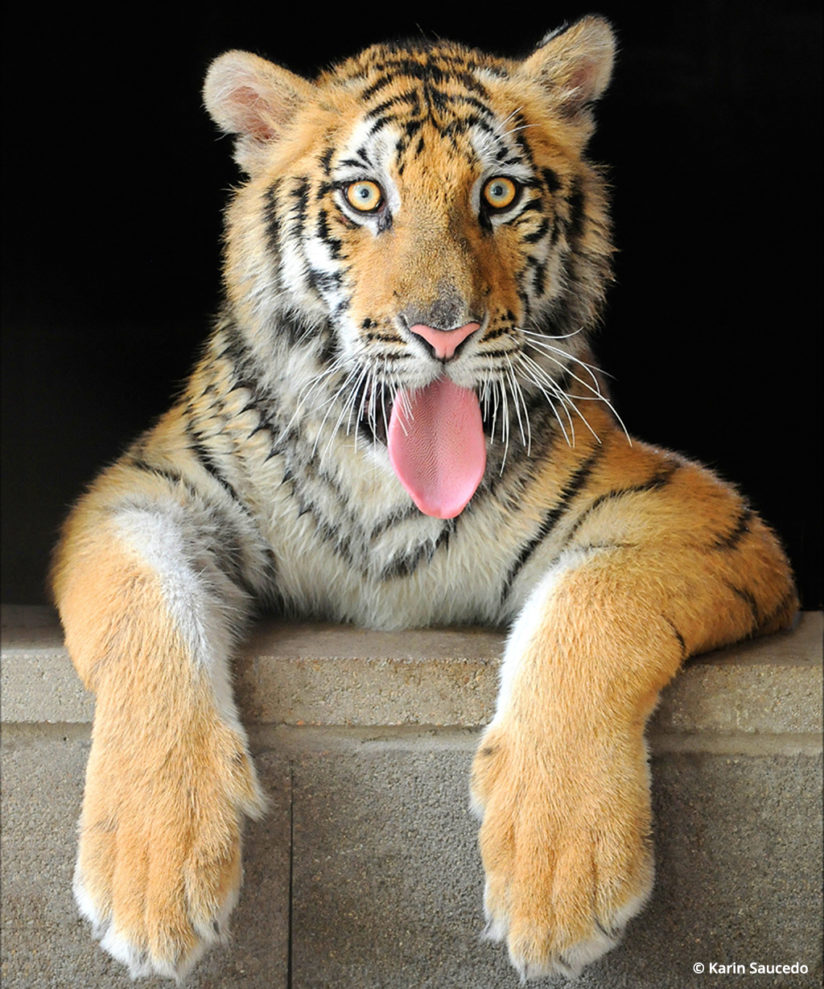
Even though we started our volunteer experience cleaning enclosures and prepping food (both incredibly vital tasks), it turned out that In-Sync really needed help with marketing. My husband and I have backgrounds in advertising and marketing, so we realized we could help in so many other ways. Now we donate our photography, marketing and design expertise along with our other duties. We are still a part of the feeding team. We help administer meds, provide enrichment, participate in animal rescues and also do post-surgery watches on the animals. Throughout it all, I’ve been given opportunities to photographically capture moments I never could have imagined in my wildest dreams. It’s been a seven-year exploration of my love for big cats. That deep love has helped me get through both the good times and also the heartbreaking times at the sanctuary.
There’s been so much growth at In-Sync since I started volunteering, and my own evolution as a photographer has mirrored that growth in many ways. I’ve been able to help give the animals a voice by capturing their beauty and their personalities. People don’t normally get to be this close to wild animals, but through photography, they fall in love with them and want to help.
Picking The Right Place To Volunteer
Your time and talent are valuable, so do your homework. There are so many causes that could really use professional-quality images to help give them the credibility they need to get the financial support they so desperately deserve. Whether it’s a rehabilitation center, animal rescue, zoo or other non-profit, find one that helps wildlife. Just because an organization calls itself a rescue, zoo or sanctuary doesn’t mean animals are their No. 1 priority. There are plenty of places out there that claim to be helping animals but instead are exploiting them. How can you know the difference? Ask questions, do some research and read reviews.
All reputable facilities have established protocols that will give you a good sense of how they care for their animals, maintain safety for their staff and the general upkeep of their facility. If they cut corners on any of these protocols, then you need to reconsider.
You can also ask whether the facility is accredited by a national or global organization. These organizations often have strict guidelines for facilities to follow that ensure their membership.
- A good place to start is GreatNonprofits, where you can see the reviews and ratings of various non-profit organizations. Keep in mind that anyone can write a review here, so be sure to read them with that in mind.
- The Global Federation of Animal Sanctuaries (GFAS) is the most highly regarded body that defines a true sanctuary. They’ve set high standards of animal care and protocols that organizations must meet in order to be accredited or verified.
- Tigers in America is another amazing organization that focuses mainly on tigers, and it has a list of criteria and organizations it supports.
- If you don’t see the organization you’re interested in listed on these websites, you should reach out to these groups directly to find out why their facility is not listed.
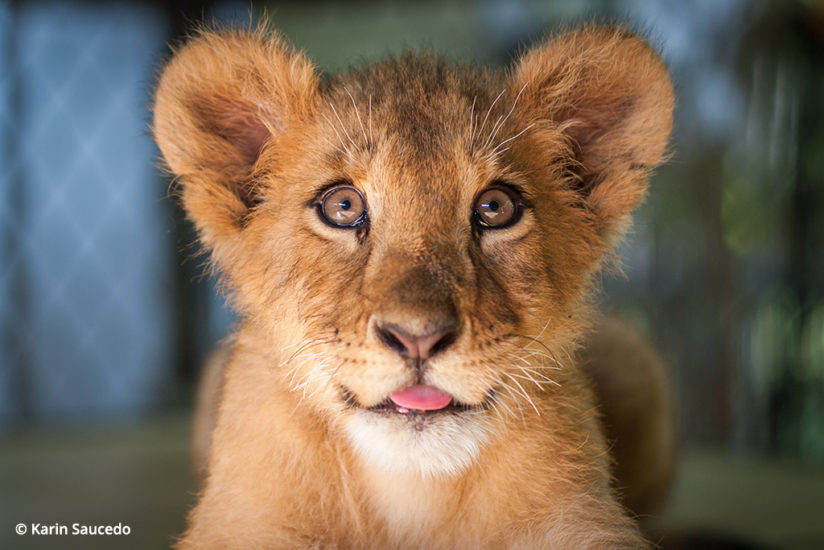
Just because a facility is not accredited doesn’t mean it’s bad. That’s why you have to also look at reviews and what the public is saying about them. Did people have a good experience? Do the animals seem content? Is the staff friendly?
Once you’ve selected a facility to work with, there are more questions you should ask. They should cover animal care, facility upkeep, fundraising activities, staffing and community involvement. A few specific questions are:
- Do they breed their animals?
- Do they spay/neuter?
- Do they declaw?
- Is there contact with the animals?
- What is their record keeping like, including medical and dietary records?
Request a tour of every animal enclosure and every part of the facility, including food prep, quarantine area, vet hospital (if they have one), medicine storage and any onsite recovery enclosures.
A good facility should have no problem giving you the information you need to make this important decision. If you sign on as a volunteer, you will get to know the facility better in time, but at the beginning you’ll want a good feeling about it. All of these things are crucial indicators of the most important single factor in your decision making process: animal care.
Getting Your Hands Dirty
Now that you are a volunteer, it’s time to jump in. The more you get to know the animals and the organization, the easier it is to be an advocate for the cause and find opportunities to use your photography. Get involved where you can. Build or clean enclosures, prepare food, help with fundraising, become a tour guide, work in the visitor center or guest shop—basically work in areas that enhance the facility or visitor experience. You’ll get to know the organization, and you’ll have a better idea of what types of photos will help their cause.
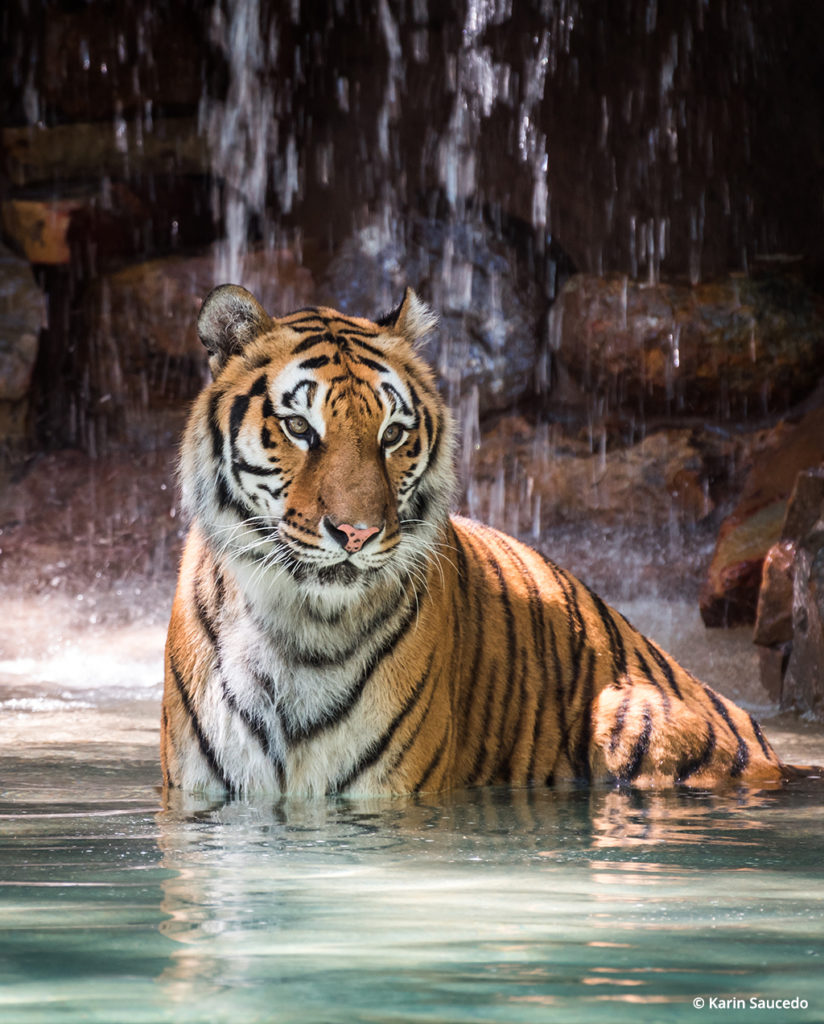
For example, we produce a fundraising calendar every year, which can bring in as much as $20,000 for the cats. Also, many of my photographs are used in marketing materials and social media content. In the seven years we’ve been volunteering, the organization’s Facebook following has increased from a few hundred to over 65,000. This is due mainly to the improved quality of marketing content and better outreach on social media.
Getting To Know The Animals
This is the best part of volunteering. The more time you spend with the animals, the more you’ll get to know them. You can eventually begin to anticipate behavior, which will allow you to make better photographs.
As you spend time observing them, you’ll quickly realize that they have very distinct personalities as a species, but more importantly as individuals. When photographing animals in the wild, you can make some basic assumptions about a particular animal based on the tendencies of the species, like the hissing of a serval or the purr of a cougar. But when you spend time with rescued animals, you start identifying individual personality traits like a spoiled lion, a primping tiger or shy ocelot.
Every time I visit Aasha, after about 20 minutes she becomes really playful and begins to stalk me. By knowing these traits, you can capture unique moments that bring their personalities to life. You will also get to know the species better, which can help enhance your experience of photographing them in the wild.
Shots of captive animals still require patience even though they’re not in the wild. I volunteered several months and spent many hours observing before I started photographing the cats. I learned their personalities and gained their trust. There will always be animals that will not connect with you. That’s OK. When a cat doesn’t want me photographing them, I walk away. I’ll never sacrifice the comfort of an animal just to get a shot. That applies to wild animals as well.
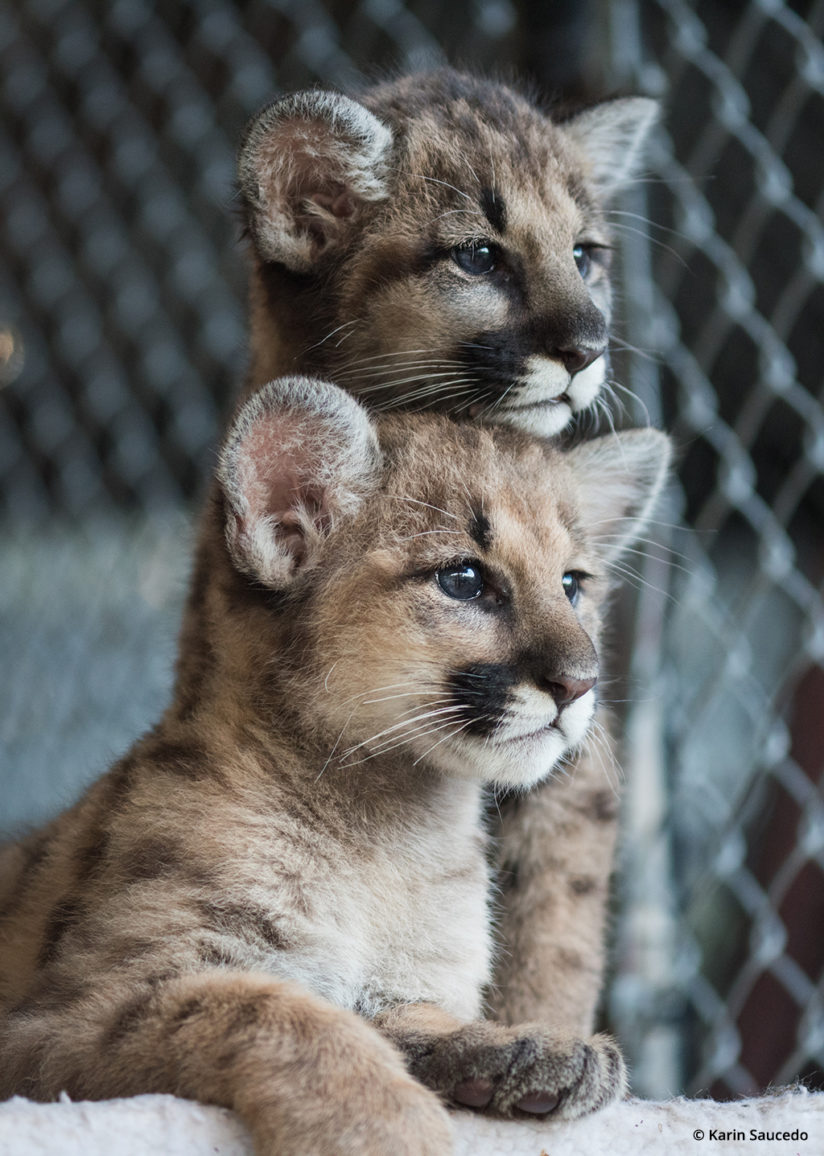
Knowing mannerisms and behavior was extremely helpful to me when I photographed wild tigers in India for the first time. I knew when the tigers were relaxed, and I knew when they were agitated, so we left the area in order to not upset them further. I could also anticipate when siblings were about to become affectionate with one another or when they were about to mark their territory. I could tell when they were just lounging around or were sitting up in a hunting position. Spending time with the animals has always been the most fulfilling part of volunteering for me, but this knowledge has also been very helpful in my photography.
Being Involved To Make A Difference
There are many organizations and facilities in the U.S. dedicated to caring for neglected, abused or unwanted animals. If you live in a major metropolitan area, you can probably find a place you can volunteer close by. If you invest the time to find one that ignites your passion, you will be fulfilled way beyond the photographs you take.
Don’t forget to do your homework to find the right place. Make sure to research and ask tons of questions. Once you are a volunteer, dive in and get involved. Spend as much time as you can with the animals and really get to know them. The dedication will shine through in your photographs, you will become a valuable asset for the facility, and the animals will benefit from your time and talent.
There are many moments that have made a difference to me, like seeing a tiger walk on grass for the first time or seeing a lion becoming calmer knowing he was going to be fed regularly. These moments are waiting for you. And if you’re lucky like me, you’ll find a lifelong friend like I did in little Aasha.
See more of Karin Saucedo’s work at karinsaucedo.com.
YOU MIGHT ALSO LIKE
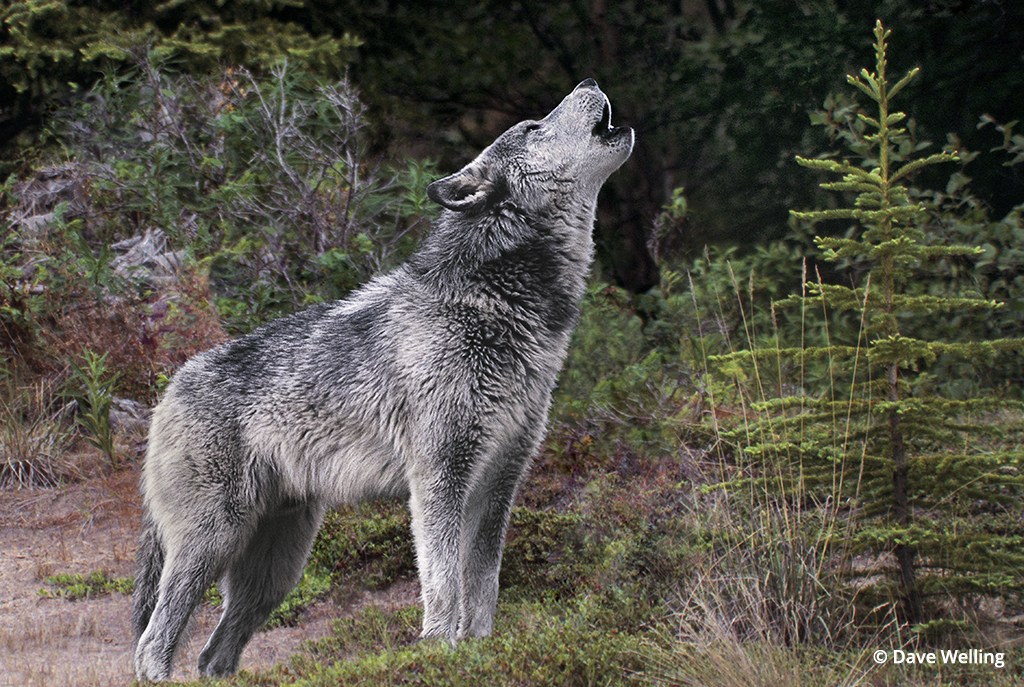
Photographing Wildlife Rescues
Tips for creating wildlife portraits in support of rescue facilities. Read now.
The post Giving Voice appeared first on Outdoor Photographer.

